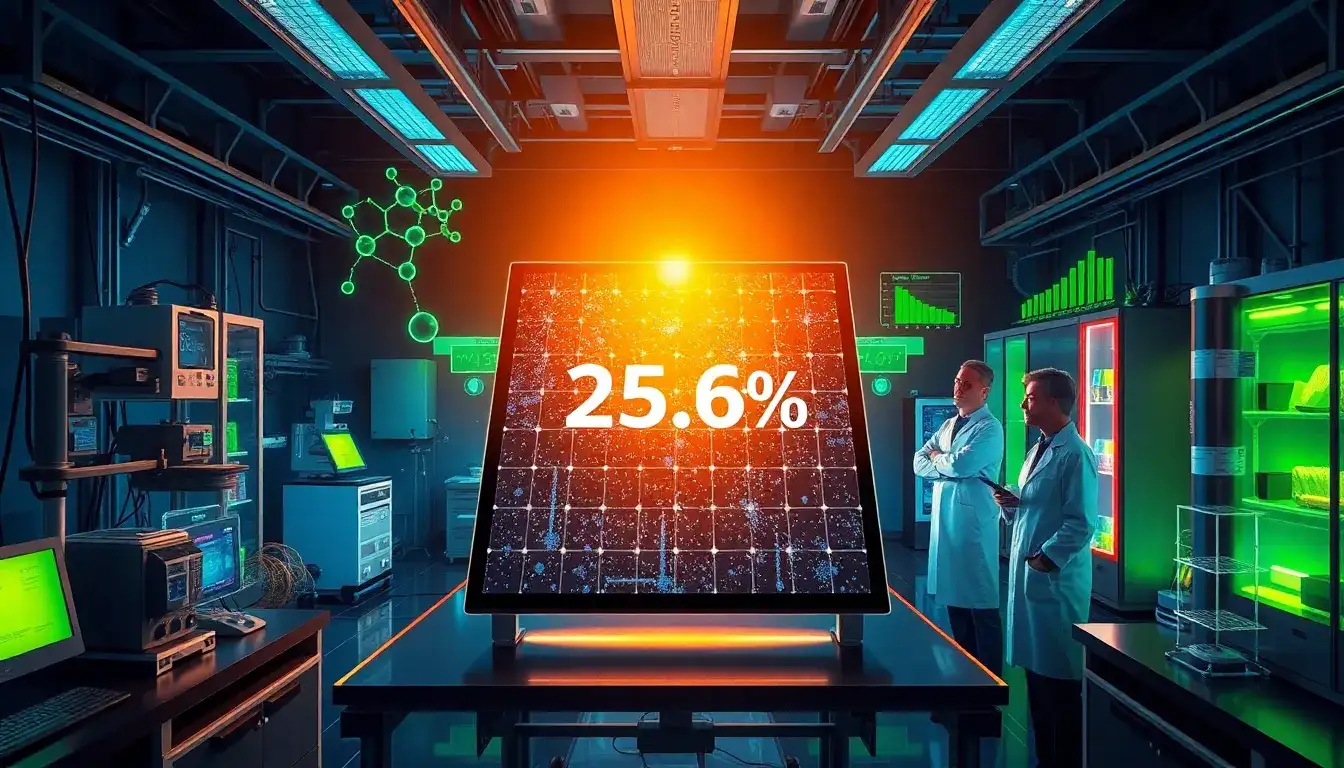
An international research team has successfully developed an inverted perovskite solar cell that achieves an impressive power conversion efficiency of 25.6%. This advancement was made possible by optimizing a buckminsterfullerene (C60) electron transport layer (ETL).
Inverted perovskite solar cells utilize a device structure referred to as “p-i-n.” In this configuration, the hole-selective contact (p) is positioned at the bottom of the intrinsic perovskite layer (i), with the electron transport layer (n) located at the top. This differs from conventional halide perovskite cells, which feature a “n-i-p” layout where light is absorbed through the ETL side.
The research team noted that while C60 is recognized as the best-performing type of ETL for perovskite solar cells, it faces challenges due to significant aggregation in solution. This aggregation necessitates the use of an expensive and complex thermal evaporation method for its production. To overcome this challenge, the researchers introduced an n-type polymeric additive to stabilize the C60 molecules for solution processing.
The team explained, “We introduced an n-type polymeric additive, TPDI-BTI, which is constructed from the strongly electron-deficient dithienylpyrazinediimide (TPDI) and the imide-functionalized bithiophene (BTI) co-unit, and applied it into the C60 ETLs.” By carefully controlling the addition of TPDI-BTI, they were able to systematically optimize various aspects of the ETLs, including film formability, morphological stability, energy levels, electron transport dynamics, intermolecular interactions, interfacial contacts, and ultimately, the photovoltaic performance and long-term stability of the solar cells.
After fine-tuning the new ETLs, the research team constructed a solar cell using a substrate made of indium tin oxide (ITO), a hole transport layer (HTL) composed of nickel(II) oxide (NiOx) and methyl-substituted carbazole (Me-4PACz), the perovskite absorber, the optimized C60 ETL, a tin oxide (SnOx) buffer layer, a bathocuproine (BCP) buffer layer, and a silver (Ag) metal contact. Under standard illumination conditions, this solar cell achieved a groundbreaking maximum power conversion efficiency of 25.60%, marking the highest efficiency recorded for inverted perovskite solar cells utilizing solution-processed C60 ETLs.
Moreover, the solar cell demonstrated exceptional stability, maintaining performance during continuous light exposure for 1,800 hours and at elevated temperatures for 700 hours. The findings were published in the journal Joule under the title “Solubilizing and stabilizing C60 with n-type polymer enables efficient inverted perovskite solar cells.”
The research team comprised scholars from Fujian Normal University, Southern University of Science and Technology (SUSTech), and Xiamen University, alongside their counterparts from Switzerland’s École Polytechnique Fédérale de Lausanne (EPFL), Imam Abdulrahman Bin Faisal University in Saudi Arabia, and Italy’s CNR Institute of Chemical Sciences and Technologies Giulio Natta.
In conclusion, the researchers stated, “This work demonstrates the great potential of C60-polymer mixed ETLs for the development of low-cost, highly efficient, and stable fully solution-processed perovskite solar cells.”
Original article by NenPower, If reposted, please credit the source: https://nenpower.com/blog/breakthrough-in-inverted-perovskite-solar-cells-stabilized-c60-achieves-25-6-efficiency/


